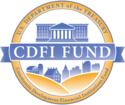What You Need To Know Before You Refinance Your Mortgage
Refinancing Your Home: What You Need to Know
While most people think of the mortgage application process as something you go through when you consider buying a house, a significant percentage of mortgage applications are lodged by current homeowners seeking to refinance their mortgages. Refinancing, while it has its particular term, is indeed just replacing an existing debt obligation with a new one—in this case, an old mortgage loan with a new mortgage loan. There are several reasons why a homeowner might wish to refinance their mortgage loan. In most cases, when contemplating refinancing, it is probably either because you want to lower your monthly mortgage payment.
How Refinancing Can Change Your Loan Terms
Let’s say you own a house and are thinking about refinancing your existing mortgage loan. When you were shopping for your home, you probably also investigated a few different banks or credit unions and spoke to a few different mortgage lenders. You go through this process because different lenders will typically offer you a range of different mortgage rates, terms, and fees for the type of loan you are seeking. Different lenders have different pricing models for mortgage loans, different ways of screening candidates, and different ways of determining risk for specific borrowers. As a result, there tends to be some variation in the mortgage loans you obtain from different lenders.
Because buyers are encouraged to shop around and talk to different mortgage lenders, there is an assumption among some segments of the population that the lenders themselves set mortgage rates. This belief is a misconception. In truth, mortgage rates are set by the U.S. Federal Reserve and by the market in general. When a lender gives you a mortgage loan, they then turn around and sell it on the secondary market. Most mortgage loans end up in the hands of Fannie Mae and Freddie Mac, massive financial institutions that buy mortgages, bundle them into securities, and sell those securities to investors. This system makes lenders feel more secure in offering mortgage loans, as they won’t have to carry the burden of those loans themselves.
However, this market-based system also means that mortgage rates are the product of the marketplace. As a result, mortgage rates tend to fluctuate as the economy does. For instance, if there is a tumble or crash in the U.S. stock market, or if unemployment rates start to rise, mortgage rates will typically decrease. If the economy is in good shape and unemployment rates are low, mortgage rates will usually begin increasing. There is a supply-and-demand curve at work here. Strong economies bring more property buying (and therefore higher interest rates) and more sluggish economies slow real estate activity (and trigger interest rate drops to stimulate the housing market).
All of this is a long way of saying that mortgage rates and terms can look very different depending on when you buy a house and lock down your mortgage loan. The terms you receive when you buy a home are just a snapshot of what the market looked like at that time. If later, mortgage rates drop and terms become more favorable, you might consider refinancing your current mortgage to change your loan terms and save money. Essentially, refinancing can replace your old mortgage loan with a new one that reflects the more favorable conditions of the current market.
Assessing Refinancing as an Option for You
In any situation, not every buyer will be quoted the same mortgage loan rates. Buyers considered to be larger risks to lenders—those with low credit scores, smaller incomes, or higher debt-to-income ratios, will be quoted higher rates. Buyers with excellent credit, high incomes, and minimal debt, meanwhile, will be offered lower rates. These same rules apply for refinancing, which means the current state of the market is not the only factor you need to consider if you want to attempt refinancing to lower your monthly mortgage payment.
Another factor is closing costs. Just as you needed to pay closing costs on your mortgage loan when you bought your house, you will need to pay them again to close out your refinanced mortgage. This factor means that homeowners will need to chat with their lenders to assess their actual savings from a potential refinancing strategy. Your lender will be able to advise you on how much your refinancing will cost you, how much you will save each month if you change your loan terms, and how long it would take you to break even based on that equation. You can then weigh these numbers against your plans—specifically how long you intend to live in your current house—to decide if mortgage refinancing is right for you.
Of course, there are other things you can do with a refinanced loan beyond taking advantage of lower interest rates. Some homeowners use refinancing as a way to switch from a 15-year loan to a 30-year loan (or vice versa). Some use refinancing to switch from a variable- to a fixed rate. There are even cash-out refinances, where—contingent on their existing home equity—buyers can refinance for a more substantial amount of money than their current mortgage and keep the residual cash for other expenses.
Where Can I Refinance My Mortgage?
At Resource One Credit Union, we are proud to offer mortgage refinancing as an option to our members. If you are interested in lowering your monthly mortgage payment, changing your loan terms, or finding out if your home equity qualifies you for a cash-out refinance, contact us today to start a conversation.





